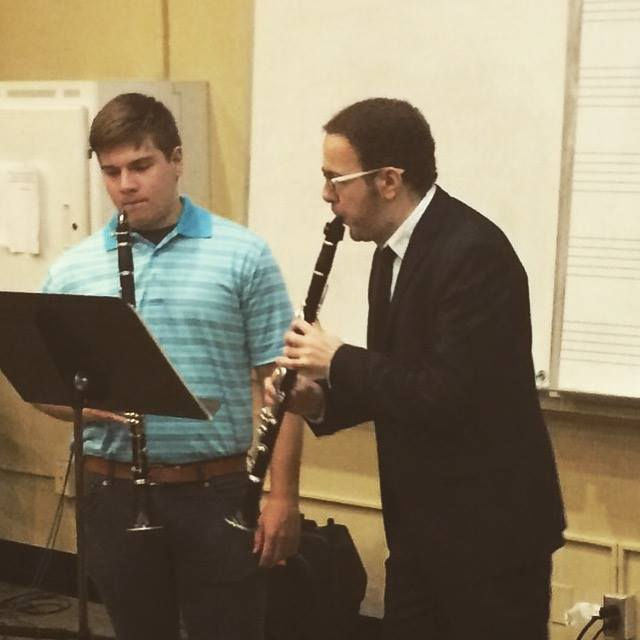
For students to master clarinet playing, it is essential that they develop all the necessary aspects that result in fine clarinet playing. These include proper breathing and posture, hand and finger position, appropriate embouchure, beautiful tone production, crisp articulation, solid rhythm, virtuosic technique, and an ability to freely express musical ideas on the instrument. When students possess a solid technical foundation in these areas, then some of the most challenging repertoire becomes easily accessible. To this end, I have combined the pedagogical methods that were presented to me by my teachers and mentors. From these methods, I have developed my own teaching system that will help improve each student’s playing. I wholeheartedly believe that it is my responsibility to identify their strengths and weaknesses and constantly work on improving all the elements of a student’s playing. I also find it important to help students master extended techniques, such as multiple tonguing, circular breathing, a variety of multiphonics, and other extended techniques depending on a student’s level.
I believe it is crucial for students to acquire all the necessary skills to become successful both as performers and pedagogues. Furthermore, I hold that instrumental music courses and applied studio instructions are a fundamental core in helping students achieve a well-rounded musical foundation. I also find it essential to cover a wide selection of clarinet literature during each semester with my students, including works from the baroque, classical, romantic and contemporary eras. That way the students develop a clear understanding of different genres and will properly approach the variety of musical styles when performing a wide range of compositions. The students will pass the knowledge when teaching their own students in the future. I also believe it is my responsibility to guide students and provide them with all the tools necessary to gain knowledge on artistic development, creative thinking, collaboration with other artists and peers (when working in groups), and musical decision-making. The trajectory of studies will benefit instrumentalists by enhancing their knowledge of clarinet history and its development.
Finally, one of the most important aspects of teaching is to help students to properly select clarinet-related equipment. Therefore, it is imperative for students to set aside a significant amount of time for selecting clarinets, mouthpieces, reeds, and other equipment. The process of selecting proper equipment will help them be the best performers and teachers they can. The quality of equipment they choose to play on, has a direct impact on students’ playing – it can either speed up or slow down their musical development. The earlier the students realize the significance of choosing proper equipment, the sooner their playing will improve. This also includes regular reed adjustment, which is one of the key components of excellent clarinet playing, and which I believe to be a major part of the teaching process as well.

Seattle, WA

Kirksville, MO

Colombia, MO.

Kirksville, MO

Seattle, WA

Kirksville, MO

Seattle, WA

Colombia, MO.

Colombia, MO.
